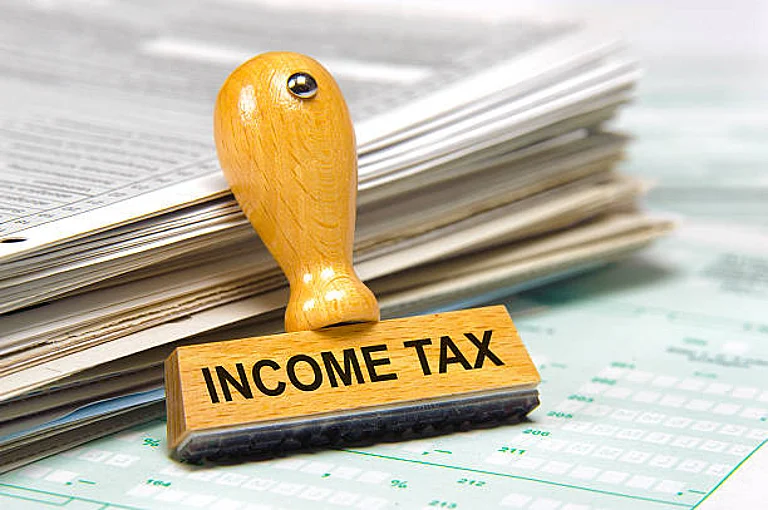When it comes to income tax planning, one of the most significant decisions you’ll need to make is whether to stick with the old tax regime or switch to the new one. The answer isn’t straightforward as it depends on your income structure, investments, and long-term financial goals.
Income Tax: What Factors To Consider When Deciding Whether To Opt For Old Or New Tax Regime?
The government has announced many income tax changes in the Union Budget 2025, to sweeten the deal for those who are looking to opt for the new tax regime. However, there are some key factors you must consider before making a choice. Read to know more
With income tax changes announced in Budget 2025, the government has now sweetened the deal for those who are looking to opt for the new tax regime. The zero-tax income threshold has been raised to Rs 12 lakh (excluding capital gains), and the standard deduction has gone up to Rs 75,000.
How would this work?
Well, this means that if your income is Rs 12.75 lakh or lower, you will not have to pay any tax under the new tax regime. Given that around 72 per cent of taxpayers have already shifted to the NTR in the financial year (FY) 2023-24, the changes announced in Budget 2025 aim to make it even more attractive. But does that mean it is the right choice for everyone? Not necessarily.
How To Choose Between The Old And New Tax Regime?
According to CA (Dr) Suresh Surana this decision largely hinges on your financial situation and tax saving strategies. He suggests the following factors that one should consider while making the choice:
1) Your Income Level and Tax Slab
The NTR offers taxpayers lower tax rates but doesn’t come without a cost. The NTR eliminates most deductions and exemptions that you can avail of in the old tax regime (OTR). If you are someone who doesn’t claim many tax-saving deductions, the new regime could mean lower tax outgo and a simple way towards tax compliance. However, if you make significant use of deductions, the OTR might be more beneficial.
Here are the revised tax slabs:
Up to Rs 4 lakh: Nil
Rs 4-8 lakh: 5 per cent
Rs 8-12 lakh: 10 per cent
Rs 12-16 lakh: 15 per cent
Rs 16-20 lakh: 20 per cent
Rs 20- 24 lakh: 25 per cent
Above Rs 24 lakh: 30 per cent
2) Deductions and Exemptions: Are you using them?
The old regime will give you multiple deductions such as under Section 80C (for PPF, EPE, and life insurance), 80D (for health insurance premiums), House Rent Allowance (HRA), and home loan interest under Section 24(b) of the Income Tax Act, 1961.
If you are someone who has significant investments in these instruments, sticking with the OTR could lead to larger tax savings.
The new regime, however, removes most of these benefits except for the standard deduction of Rs 75,000. So if you are not actively investing in tax-saving instruments, NTR might work better for you.
3) Your Salary Structure
Many salaried employees who receive benefits like HRA, LTS, professional tax deductions and employer contributions to social security schemes might find OTR much better. On the other hand, professionals and self-employed individuals with fewer structured deductions may find the new regime’s lower tax rates more appealing.
3) Your Retirement Planning and Long-term financial goals
Experts believe that the old tax regime encourages taxpayers to invest in retirement and wealth-building instruments such as PPF, EPF, NPS, and insurance policies.
Those who prioritise long-term financial planning may prefer the old regime over the new one. However, those who prefer a higher take-home salary without making such investments may opt for the new regime.
4) Prefer Simplicity Over Tax Savings
Another key factor is whether you prefer simplicity or tax savings. The new regime offers you a straightforward tax structure with lower slabs and fewer deductions. It makes it easier for those people who do not want to manage multiple deductions. However, if you are comfortable with tax planning, the old regime could result in more savings and building a habit of investment.
5) Personalised Tax Calculation
Says CA Surana, “The best way to decide is to calculate tax liability under both regimes based on expected income, deductions, and investments. Many online tax calculators are available to compare the benefits of each regime.”
All in all, those with significant deductions and a structured salary might find the old regime better suited for their goals while people who prefer a simpler system with lower tax rates and easy compliance may go for the NTR. “An annual review of tax liability under both regimes should be made for the purpose of,” CA Surana states.


